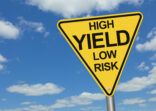“After a decade of outperformance by mega-cap, growth stocks, now is a great opportunity for funds that focus on mid- and large-cap value stocks,” Jonathan Pines, head of Hermes Asia ex-Japan, told FSA during a recent visit to Hong Kong.
London-based Pines is the lead manager of the $3.39bn Hermes Asia ex-Japan Equity Fund, which has struggled over the past year.
“We were overwhelmed by the style difference between our approach and the dominant preference in the markets for high growth, mega-cap stocks,” he said.
The fund is up 3.53% for the 12-months to 14 November, compared with 11.81% by its MSCI Asia ex-Japan benchmark and 12.02% by the sector average, according to FE Fundinfo data.
The relative weakness of its performance during the past year is in sharp contrast to the fund’s long-term returns. Over three years, it has outperformed the peer average, and over five years it has beaten both its category average and benchmark, with a cumulative return of 34.54% compared with 29.5% and 19.11% respectively.
The fund, which is available to accredited investors in Singapore, is more volatile than its peers (14.71% versus 12.78%) over three years, but in line with its benchmark (14.69%).
“Now, a low interest rate environment means that the factor used to discount future corporate earnings is lower too, which translates into higher present values of those real future earnings, opening up opportunities to find undervalued and mis-priced stocks,” said Pines.
The Hermes style is to focus on identifying specific undervalued stocks, rather than make allocations based on a macroeconomic house view. Hence, the asset manager doesn’t tend to announce the broad picture “risk-on” or “risk-off” type of strategies described to FSA recently by Goldman Sachs AM and Daiwa.
Stock selection
However, Pines’s main focus is not on quality companies, nor are he and co-manager Sandy Pei pure value investors who simply target stocks trading on low price-to-book and price-to-earnings multiples.
“Our principal strategy is to identify good deals, buying stocks that are cheap relative to their [intrinsic] value,” said Pines.
Portfolio allocations are made through “rigorous bottom-up stock and company analysis, so the fund’s holdings tend to diverge significantly from its MSCI Asia ex-Japan benchmark”, said Pines.
The unintended consequences are big overweights to China (42% versus 35% for the index) and Taiwan (24% versus 15%), and a large underweight to India (1.6% versus 11.1%).
“We have found that India companies are too expensive,” explained Pines.
In terms of sector allocation, the portfolio is underweight information technology, largely due to not holding Tencent, which Pines concedes contributed to the fund underperforming its benchmark over the past year.
It also has a large underweight to financials (7.62% versus 21.84%), because “we are sceptical about the numbers released by China banks, which probably don’t fully account for their non-performing loans”, he said.
“We also concerned that some Chinese state-owned companies, including banks, are supporting other state-owned entities through cross-shareholdings similar to the opaque networks that were common in South Korea,” he added.
Top individual stock overweights include ASE Technology, a Taiwanese assembly, packaging and testing company, that should soon enjoy “synergistic benefits from a recent cash acquisition”; Wuliangye Yibin, a Chinese liquor manufacture which “offers better value” than its more well-known rival baijiu distiller Kweichow Moutai; and Hong Kong’s CK Hutchison, which trades on a price-earnings ratio of only seven, “which is too low for a company that generates most of its revenues from overseas, according to Pines.
His preference for value over growth stocks has an additional benefit, he added.
“Although we don’t deliberately seek high dividend stocks, our emphasis on value rather than growth potential means that many of the stocks we hold provide generous pay-outs.”
“Ultimately, the price we pay for a stock, identifying and acting on a ‘good deal’, is the most important factor in the fund’s performance,” said Pines.
Hermes Asia ex-Japan Equity Fund

(Source: Factsheet, 30 September 2019)
Hermes Asia ex-Japan Equity Fund vs MSCI Asia ex-Japan index and sector average


















